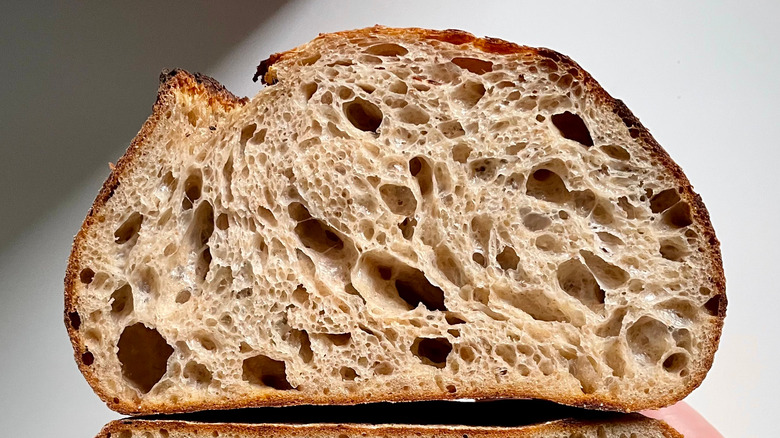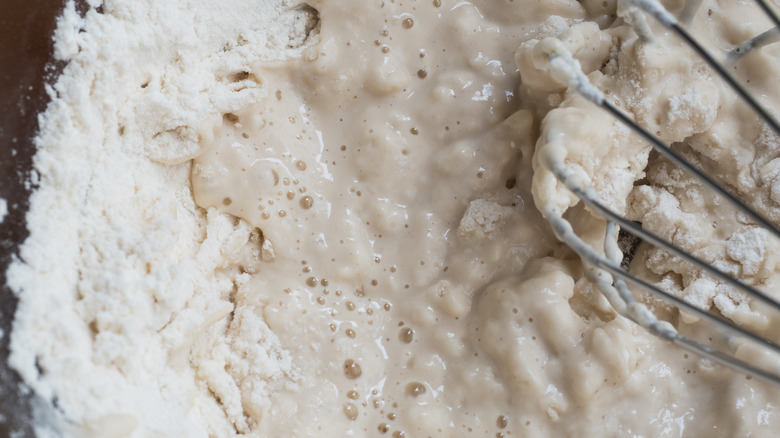What Does 'High Hydration' Mean For Bread Dough?
Those of us who bake understand the feeling of triumph that surges through us when our homemade bread comes out so perfectly that it looks as though it came straight from the local bakery. But, as coins are two-faced, we also know the feeling of absolute disappointment when, despite following all of the instructions to the letter, our bread comes out dense and stodgy. There is any number of reasons this could have happened.
According to The Bread Guide, it could be anything from not mixing the salt and yeast right, to not kneading the dough enough, to having too much flour and not enough water. Troubleshooting with dough can be like a shot in the dark. Sometimes you just don't know. But let's jump back to the flour-to-water ratio, for a moment. Just as we need water to keep us hydrated and functioning properly, so too does bread need the correct amount of water in order to do its job.
This concept, simply known as hydration, is something all bakers need to understand in order to improve their skills. According to King Arthur, hydration, or the amount of water present in a dough, comes in two categories — high and low. The difference between the two is a simple matter of flour-to-water ratios. The goal of understanding hydration is such that you should be able to read a recipe and distinguish a high-hydration bread from a low-hydration one.
A matter of percentage
Bread dough hydration operates on a numerical, weight-based percentage scale, hovering somewhere between 50% to 100% hydration. According to King Arthur, bread doughs that have high hydration are those that have water-to-flour percentages of over 80%. Certain doughs may even exceed the 100% hydration mark. However, a common sourdough loaf with a highly hydrated starter (125%) will yield bread with about 65% hydration, which is on the lower side, per MasterClass.
The end result of dough with high hydration is that the bread will have active fermentation and gluten development. King Arthur points out that highly hydrated bread, like ciabatta, will have an open crumb structure with several pockets of air developing during final proofing and the bake. Think of a light and airy French baguette as opposed to a dense loaf of dark Scandinavian rye bread. One very clearly had a more hydrated dough than the other, on the simple account of the crumb structure.
Of course, rye and all-purpose flour are very different in terms of protein structure, and therefore require different levels of hydration in order to ferment properly. Overall, if you're discussing bread with a baking friend — or find yourself in the midst of a "Great British Bake Off" style technical challenge — and the phrase "high hydration" comes up, you will know that the bread in question needs to have high water to flour ratio and that the resulting bake should contain plenty of air pockets.

